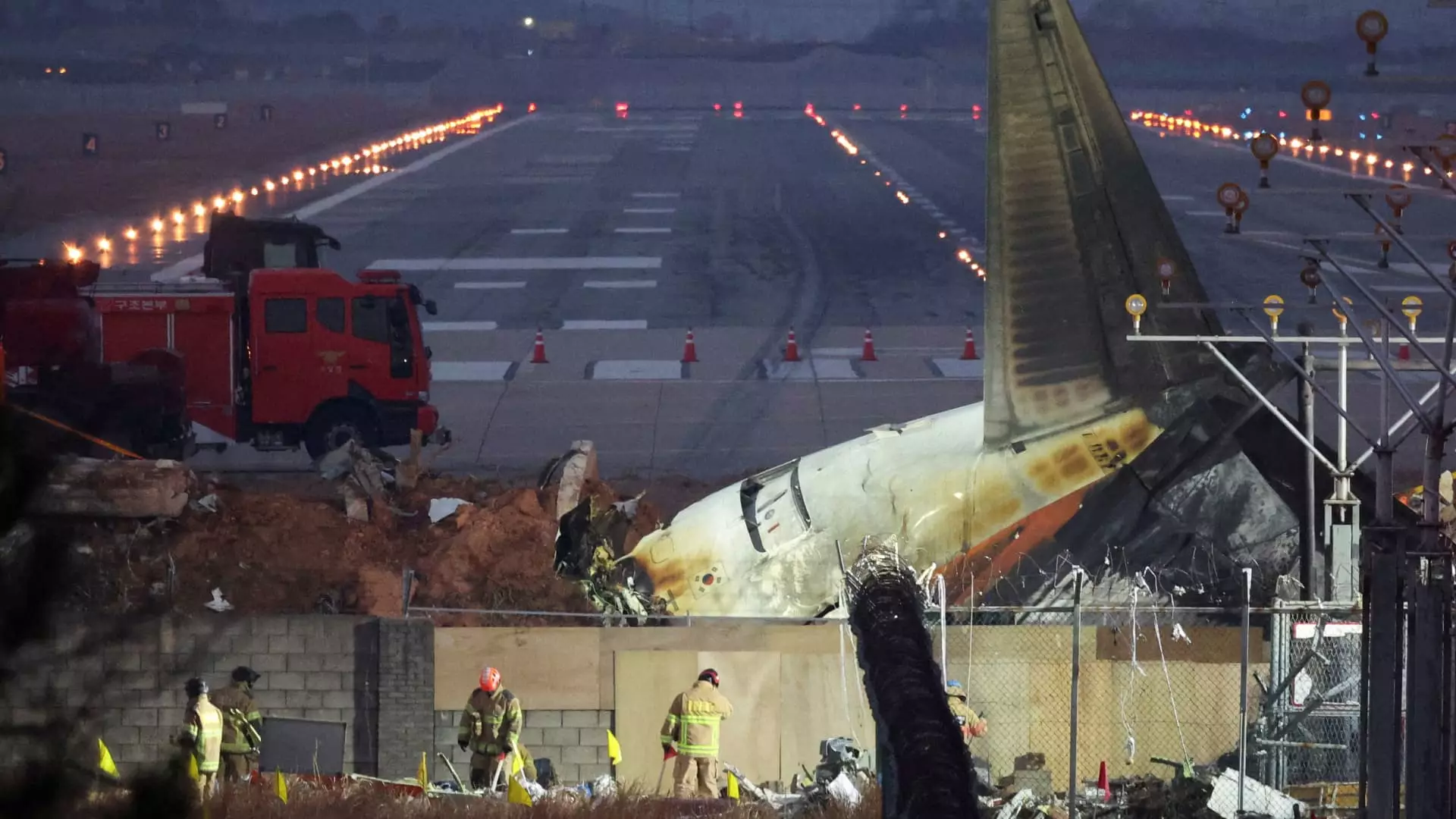The recent tragedy involving Jeju Air Flight 7C2216 has prompted serious scrutiny of airport design and safety protocols. With only two survivors among the 181 individuals aboard, the incident marks South Korea’s worst aviation disaster. The plane, a Boeing 737-800, crash-landed after apparently failing to deploy its landing gear and flaps, a situation exacerbated by the presence of a dirt mound and a concrete wall just beyond the runway. This appalling event raises critical questions about existing safety measures and the adequacy of regulatory frameworks governing airport design.
Aviation experts have raised alarms about the placement of obstacles at airports, particularly those situated closely to runways. The concrete wall and the unmapped mound of dirt played a crucial role in the unfortunate trajectory of the flight. Todd Curtis, a former safety engineer at Boeing, highlighted how the presence of these structures could significantly complicate landing dynamics, making it difficult for the flight crew to halt the aircraft in a secure manner. Given that a smooth landing is critical for safety, it’s essential to assess whether, and how, airport designs can be improved to mitigate such tragic occurrences in the future.
Conducting a thorough investigation will be paramount in understanding the sequence of events leading up to the crash. Initial analyses suggest a bird strike might have compromised engine performance, leading to the belly landing. However, experts caution that it’s premature to conclusively attribute any single factor as the cause. Investigators will delve into maintenance records, crew scheduling, and aircraft systems, with the grim expectation that months of meticulous work remain before definitive conclusions can be drawn.
John Cox, an aviation safety consultant, speculated that the primary cause of fatalities amongst passengers may stem from the impact with the wall itself, described as blunt force trauma. While technology exists that could potentially prevent such catastrophic outcomes—such as Engineered Material Arresting Systems (EMAS)—the lack of similar safety features at Muan International Airport exposes a worrying trend in airport infrastructure. Even renowned airports like LaGuardia have implemented measures that should serve as benchmarks for others, emphasizing the importance of proactive safety measures in reducing potential injuries and fatalities.
As the aviation community grapples with the aftermath of this tragedy, the call for regulatory revisions grows louder. There needs to be an imperative discussion regarding standardized safety features at runways worldwide to ensure that such disasters are not repeated in the future. Safety must be prioritized over cost, forcing airport authorities to reconsider their designs and operational protocols.
The harrowing events surrounding Jeju Air Flight 7C2216 serve as a wake-up call about the responsibilities of regulatory bodies and airport authorities in ensuring the highest standards of safety. As investigations unfold, it is vital that lessons are learned, leading to improvements in aviation safety protocols that prioritize passenger security and mitigate the risks associated with runway design. Only through rigorous analysis and proactive measures can we hope to prevent such tragedies from occurring in the future.

